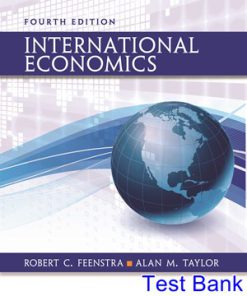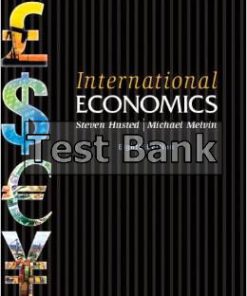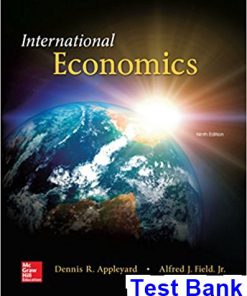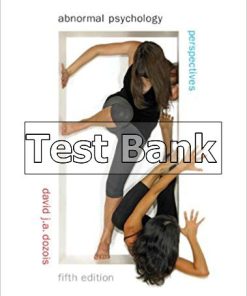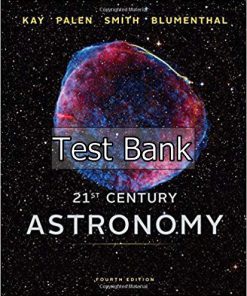International Economics 9th Edition Husted Test Bank
You may also like
International Economics 9th Edition Husted Test Bank
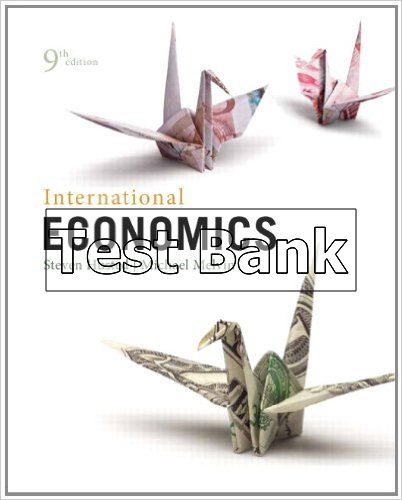
Product details:
- ISBN-10 : 0321783867
- ISBN-13 : 978-0321783868
- Author: Steven Husted, Michael Melvin
International Economics is an accessible, comprehensive and relevant guide for studying international economics. Using real data and issues that motivate theoretical discussions, this text captures readers’ attention and equips them with a practical understanding of major policy questions.
Table contents:
- Preface
- About the Authors
- Chapter 1 An Introduction to International Trade
- Topics to Be Covered
- Key Words
- Characteristics of National Economies
- Economic Growth
- International Trade
- The Direction of International Trade
- What Goods Do Countries Trade?
- Summary
- Exercises
- Chapter 2 Tools of Analysis for International Trade Models
- Topics to Be Covered
- Key Words
- Some Methodological Preliminaries
- The Basic Model: Assumptions
- The Basic Model: Solutions
- Measuring National Welfare
- National Supply and Demand
- Summary
- Exercises
- Derivation of National Supply and Demand Curves
- Chapter 3 The Classical Model of International Trade
- Topics to Be Covered
- Key Words
- Absolute Advantage as A Basis For Trade:Adam Smith’s Model
- Comparative Advantage As A Basis For Trade:David Ricardo’s Model
- The General Equilibrium Solution of The Classical Model
- The Gains From International Trade
- Trade and Wages
- An Evaluation of the Classical Model
- Summary
- Exercises
- Chapter 4 The Heckscher–Ohlin Model
- Topics to Be Covered
- Key Words
- The HO Model: Basic Assumptions
- The HO Theorem
- Equilibrium in the HO Model†
- Some New HO Theorems
- Some Final Observations
- Summary
- Exercises
- The Heckscher–Ohlin Theorem (Price Definition)
- The Rybczynski Theorem
- The Stolper–Samuelson Theorem
- Chapter 5 Tests of Trade Models: The Leontief Paradox and Its Aftermath
- Topics to Be Covered
- Key Words
- Tests of the Classical Model
- Tests of the HO Model
- Attempted Reconciliations of Leontief’s Findings
- Other Tests of the HO Model
- Recent Tests of the HO Model
- Alternative Theories of Comparative Advantage
- Human Skills Theory
- Product Life Cycle Theory
- Similarity of Preferences Theory
- Intraindustry Trade
- Increasing Returns and Imperfect Competition
- Conclusions
- Summary
- Exercises
- References
- Chapter 6 Tariffs
- Topics to Be Covered
- Key Words
- The Gains from Free Trade
- Tariffs: An Introduction
- Tariffs: An Economic Analysis
- The Gains from Free Trade: One More Time
- The Welfare Cost of Tariffs
- Tariffs: Some Extensions
- Export Tariff
- The Optimal Tariff*
- How High Are Tariffs?
- Summary
- Exercises
- References
- Chapter 7 Nontariff Barriers and Arguments for Protection
- Topics to Be Covered
- Key Words
- Quotas
- The Welfare Effects of Quotas
- The Equivalence or Nonequivalence of Tariffs and Quotas
- Other Nontariff Barriers
- Customs Valuation Practices
- Government Procurement Policies
- Technical Barriers to Trade
- Health and Safety Standards
- Failure to Protect Intellectual Property Rights*
- Export Subsidies‡
- Arguments for Protection
- Invalid Arguments†
- Valid Arguments†
- Summary
- Exercises
- References
- Chapter 8 Commercial Policy: History and Practice
- Topics to Be Covered
- Key Words
- History of U.S. Commercial Policy
- Part I
- MFN
- Binding tariff schedules
- Part II
- National treatment
- Customs regulations
- Antidumping and countervailing duties
- Quantitative restrictions
- Subsidies
- State-owned enterprises
- Government assistance in developing countries
- Escape clause and other exceptions
- Consultation and dispute settlement
- Part III
- Procedural issues
- Part IV
- Trade and development—treatment of developing countries
- The Uruguay Round and the Creation of the WTO
- Trade Policy Case Study 1 U.S. Tuna Quotas to Save Dolphins
- The Doha Round
- The Conduct of U.S. Commercial Policy
- Dumping
- Antidumping Law
- Countervailing Duty Law
- Unfair Foreign Practices: Section 301
- Trade Policy Case Study 2 The International Bananas Dispute
- The Escape Clause: Section 201
- Other Measures
- Trade Policy Case Study 3 Tire Imports from China
- Comparisons with Policies in Other Countries
- Summary
- Exercises
- References
- Chapter 9 Preferential Trade Arrangements
- Topics to Be Covered
- Key Words
- Preferential Trade Arrangements: Economic Analysis
- North American Free Trade Agreement
- Basic Agreements
- Tariffs
- Safeguards Protection
- Investment
- Health and Safety Standards
- Services
- Intellectual Property Protection
- The Side Agreements
- North American Agreement on Environmental Cooperation
- North American Agreement on Labor Cooperation
- Other U.S. Free-Trade Area Agreements
- European Union
- The EU Government
- The Single Market Initiative
- Regionalism Versus Multilateralism
- Africa
- Asia
- Europe
- Latin America
- Summary
- Exercises
- References
- Chapter 10 International Trade and Economic Growth
- Topics to Be Covered
- Key Words
- Trade and Development*
- Primary-Export-Led Development Policies
- Import-Substitution Development Policies
- Outward-Looking Development Policies
- Trade and Growth*
- Trade and Growth: Some Additional Comments
- Technological Change
- Growth, Prices, and Welfare
- International Flows of Factors
- Labor
- Capital
- Economic Analysis
- Summary
- Exercises
- References
- Chapter 11 The Balance of Payments
- Topics to Be Covered
- Key Words
- Introduction to Balance-of-Payments Accounting
- Current Account Entries
- Financial Accounts Entries
- Measures of The Balance of Payments
- Current Account Balance
- Official Settlements Balance
- Transactions Classifications
- Balance-of-Payments Equilibrium and Adjustment
- Summary
- Exercises
- References
- Chapter 12 The Foreign-Exchange Market
- Topics to Be Covered
- Key Words
- Spot Rates
- Forward Rates
- Arbitrage
- The Futures Market
- Foreign Currency Options
- The Foreign-Exchange Market And The Balance Of Payments (Bop)
- Summary
- Exercises
- References
- Chapter 13 International Monetary Systems
- Topics to Be Covered
- Key Words
- The Gold Standard: 1880–1914*
- The Interwar Period: 1918–1939‡
- The Bretton Woods System: 1944–1973
- Today’s International Monetary System: 1973–Present
- The European Monetary System and the Euro*
- The Choice Of An Exchange Rate System
- Summary
- Exercises
- References
- Chapter 14 Exchange Rates In The Short Run
- Topics to Be Covered
- Key Words
- Exchange Rate Behavior
- Uncovered Interest Rate Parity
- Example 1
- Example 2
- Expected Exchange Rates and the Term structure Of Interest Rates
- Tests of Uncovered Interest Rate Parity
- Summary
- Exercises
- Chapter 15 Exchange Rates in the Long Run
- Topics to Be Covered
- Key Words
- An Introduction to Purchasing Power Parity
- Uses of Purchasing Power Parity
- Tests of Purchasing Power Parity†
- The Monetary Approach to Exchange Rates
- Summary
- Exercises
- References
- Chapter 16 Theories of the Current Account
- Topics to Be Covered
- Key Words
- The Elasticities Approach to the Current Account
- Elasticities and J Curves*
- The Currency-Contract Period
- The Pass-Through Period
- The Evidence from Devaluations
- The Absorption Approach
- The Intertemporal Model
- A Look at U.S. Data
- Summary
- Exercises
- References
- Chapter 17 Open-Economy Macroeconomics
- Topics to Be Covered
- Key Words
- Modeling the Macroeconomy
- Example 1
- Internal External Balance
- International Policy Coordination
- Summary
- Exercises
- The IS Curve
- The LM Curve
- The BP Curve
- Equilibrium
- Monetary Policy Under Fixed Exchange Rates
- Fiscal Policy Under Fixed Exchange Rates
- Monetary Policy Under Floating Exchange Rates
- Fiscal Policy Under Floating Exchange Rates
- References
- Chapter 18 International Banking, Debt, and Risk
- Topics to Be Covered
- Key Words
- The Origins of Offshore Banking
- International Banking Facilities
- Offshore Banking Practices
- Example
- International Debt
- IMF Conditionality
- The Role of Corruption
- Country-Risk Analysis
- Summary
- Exercises
- References
- Glossary
- Index
People also search:
International economics 9th
International economics 9th edition
International economics 9th edition solutions
International economics appleyard 9th edition
What is international economic order

